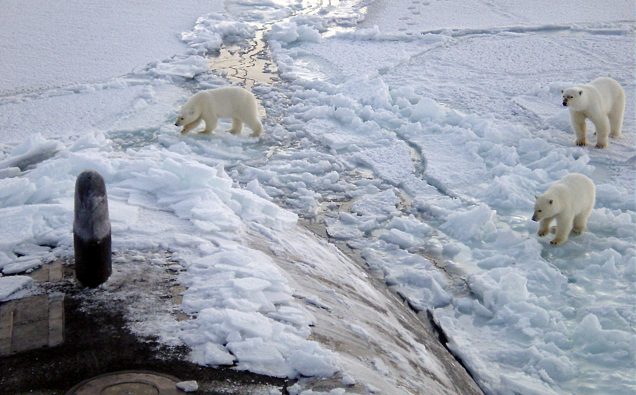
At the end of one of the warmest years on record, a new report has warned of the alarming melting of ice on the Arctic, with scientists urging decisive action to confront fast-happening climate change.
The year has seen flooding, droughts, heat, and hurricanes and the Arctic seems to be one of the troubling signs that point to rapidly evolving climate change trends around the world.
The UN hosted a COP26 conference in Glasgow to step up efforts to contain the release of poisonous gases into the climate. Scientists have proposed even going beyond the 2015 Paris Climate Accord, which remains unfulfilled.
A team of UN experts had this warning.
“The world’s largest and wealthiest economies, however, failed to make sufficiently strong commitments to keep planetary warming to 1.5°C.”
The climate conference, they said, also “failed to ensure sufficient progress on the loss and damage funds, leaving many climate-vulnerable countries without the resources necessary, to shift to cleaner energy and cope with increasingly extreme weather disasters”.
In the United States, President Joe Biden has committed to making more robust efforts to check climate degradation but there are big issues like fossil fuel use and opposition to steps that might affect local economies. Electric cars are also being seen as a way to reduce carbon emissions. China and India, the two largest populations, are among the biggest polluters and have not met goals to reduce carbon emissions.
Now unusually warm temperatures in the middle of winter are making people wonder what lies ahead with no check on fossil fuel use and release of carbon gases.
This month the latest report on the conditions on the Artic also warned the world of the climate uncertainties.
Called Arctic Report Card, the 16th annual volume of the analysis documents rapid and dramatic shifts in weather, climate, terrestrial and oceanic conditions in the circumpolar region.
According to National Oceanic and Atmospheric Administration, which released the report, it has been compiled by 111 scientists from 12 nations.
“The Arctic Report Card continues to show how the impacts of human-caused climate change are propelling the Arctic region into a dramatically different state than it was in just a few decades ago,” said NOAA Administrator Rick Spinrad, Ph.D.
“The trends are alarming and undeniable. We face a decisive moment. We must take action to confront the climate crisis.”
NOAA says the Arctic Report Card is organized into three sections. Vital Signs provides annual updates on seven topics: Surface Air Temperature; Terrestrial Snow Cover; Greenland Ice Sheet; Sea Ice; Sea Surface Temperature; Arctic Ocean Primary Productivity; and Tundra Greenness.

Other Indicators explore topics that are updated periodically. Frostbites report on new and emerging issues, and topics that relate to long-term scientific observations in the Arctic.
Here are some of this year’s significant as listed by the NOAA:
- The October-December 2020 period was the warmest Arctic autumn on record dating back to 1900. The average surface air temperature over the Arctic this past year (October 2020-September 2021) was the 7th warmest on record. The Arctic continues to warm more than twice as fast as the rest of the globe.
- The snow-free period across the Eurasian Arctic during summer 2020 was the longest since at least 1990. June 2021 snow cover in Arctic North America was below the long-term average for the 15th consecutive year. June snow cover in Arctic Europe has been below average 14 of the last 15 years.
- Following decades of relative stability, the Greenland ice sheet has now lost mass almost every year since 1998, with record ice loss in 2012 and 2019. In August, rainfall was observed at the Greenland ice sheet’s 10,500-foot summit for the first time ever.
- The volume of post-winter sea ice in the Arctic Ocean in April 2021 was the lowest since records began in 2010. The amount of older, biologically important multiyear sea ice at the end of summer 2021 was the second-lowest since records began in 1985.
- The total extent of sea ice in September 2021 was the 12th lowest on record. All 15 of the lowest minimum extents have occurred in the last 15 years. The substantial decline in Arctic ice extent since 1979 is one of the most iconic indicators of climate change.
- The loss of sea ice has enabled shipping and other commercial and industrial activities to push deeper into the Arctic, in all seasons, resulting in more garbage and debris collecting along the shore and more noise in the ocean, which can interfere with the ability of marine mammals to communicate.
- Some of the fastest rates of ocean acidification around the world have been observed in the Arctic Ocean. Two recent studies indicate a high occurrence of severe dissolution of shells in natural populations of sea snails, an important forage species, in the Bering Sea and Amundsen Gulf.














